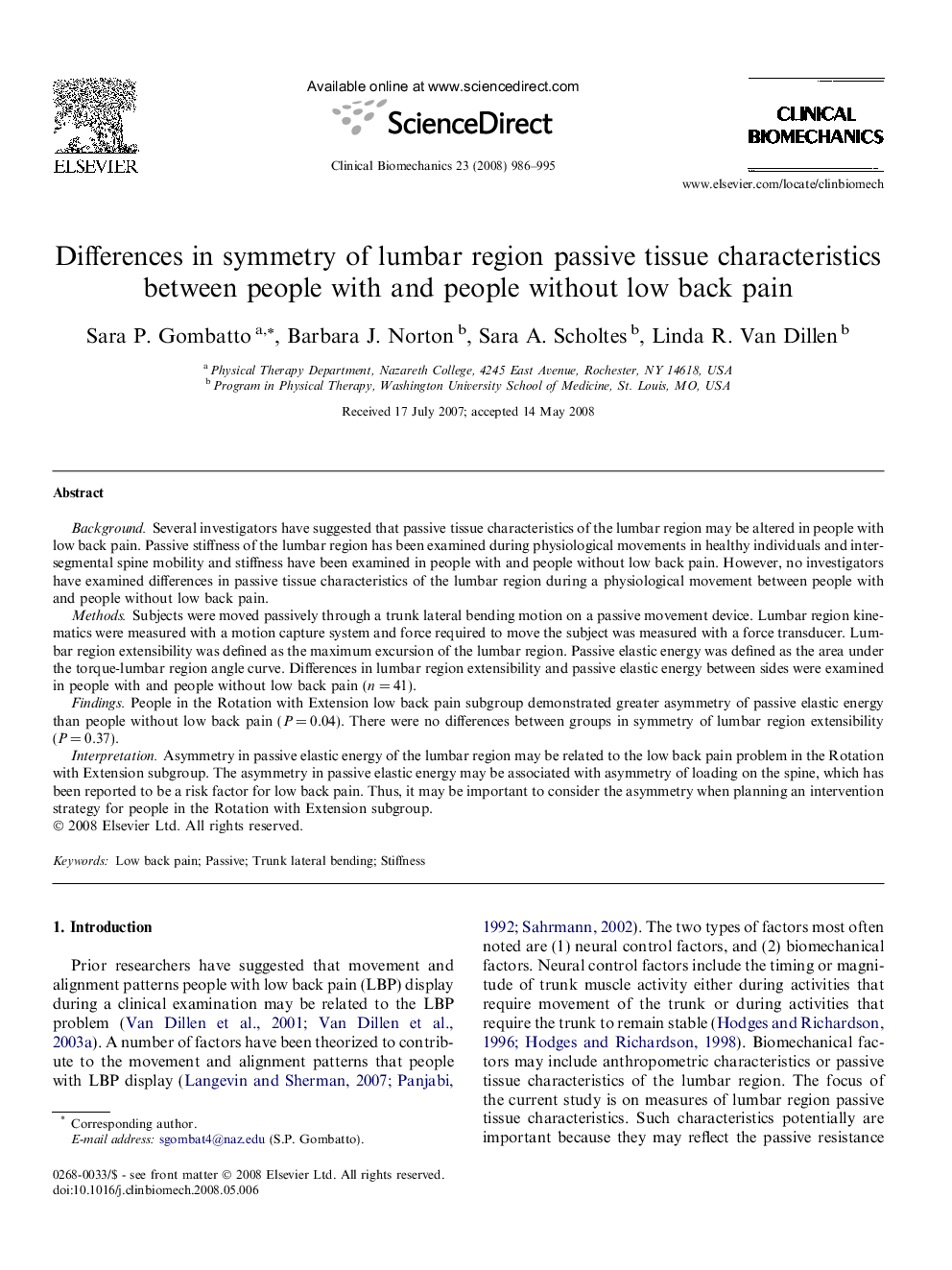| کد مقاله | کد نشریه | سال انتشار | مقاله انگلیسی | نسخه تمام متن |
|---|---|---|---|---|
| 4051060 | 1264972 | 2008 | 10 صفحه PDF | دانلود رایگان |

BackgroundSeveral investigators have suggested that passive tissue characteristics of the lumbar region may be altered in people with low back pain. Passive stiffness of the lumbar region has been examined during physiological movements in healthy individuals and intersegmental spine mobility and stiffness have been examined in people with and people without low back pain. However, no investigators have examined differences in passive tissue characteristics of the lumbar region during a physiological movement between people with and people without low back pain.MethodsSubjects were moved passively through a trunk lateral bending motion on a passive movement device. Lumbar region kinematics were measured with a motion capture system and force required to move the subject was measured with a force transducer. Lumbar region extensibility was defined as the maximum excursion of the lumbar region. Passive elastic energy was defined as the area under the torque-lumbar region angle curve. Differences in lumbar region extensibility and passive elastic energy between sides were examined in people with and people without low back pain (n = 41).FindingsPeople in the Rotation with Extension low back pain subgroup demonstrated greater asymmetry of passive elastic energy than people without low back pain (P = 0.04). There were no differences between groups in symmetry of lumbar region extensibility (P = 0.37).InterpretationAsymmetry in passive elastic energy of the lumbar region may be related to the low back pain problem in the Rotation with Extension subgroup. The asymmetry in passive elastic energy may be associated with asymmetry of loading on the spine, which has been reported to be a risk factor for low back pain. Thus, it may be important to consider the asymmetry when planning an intervention strategy for people in the Rotation with Extension subgroup.
Journal: Clinical Biomechanics - Volume 23, Issue 8, October 2008, Pages 986–995